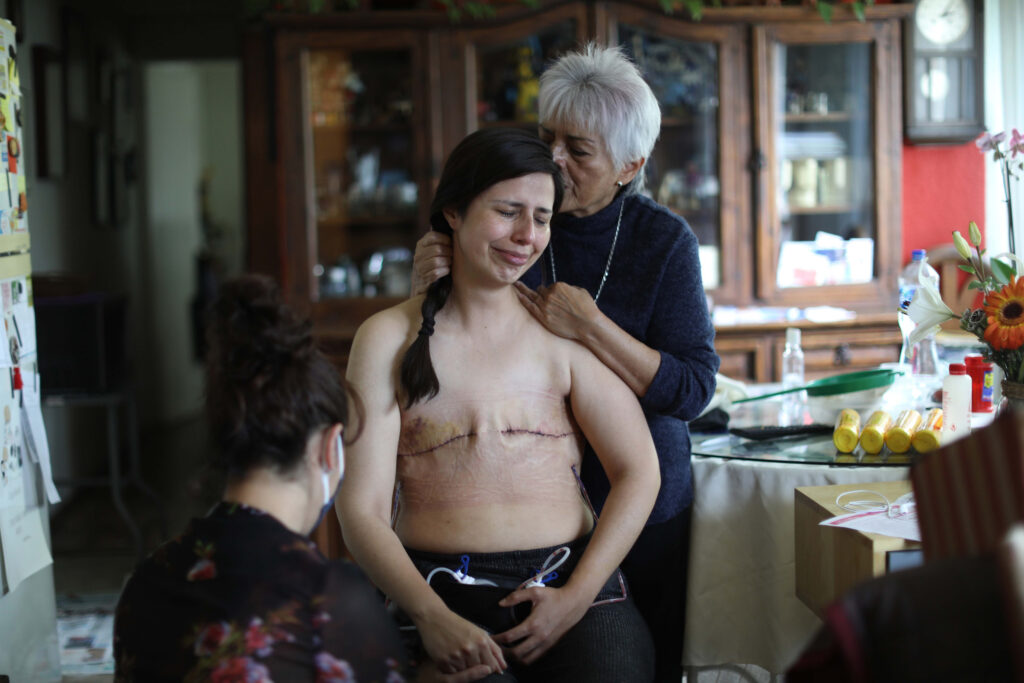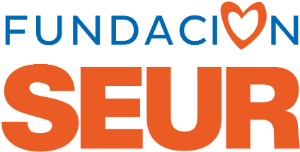On World Cancer Day, Sáshenka Gutiérrez, Special Mention of the 26th edition of the Luis Valtueña Humanitarian Photography Award, talks about her work Jódete Cáncer and the importance of accompanying this disease.
It was in the middle of the pandemic when Sáshenka Gutiérrez and Sandra Monroy met as a result of a casual exchange on social networks. The same time that Sandra was diagnosed with cancer, she decided to have her breasts removed and forgo further reconstruction. It was also the beginning of the photojournalistic work Jódete Cáncer by Mexican Sáshenka Gutiérrez.
The idea of the project was to photograph Sandra before her mastectomy as a farewell therapy, but at the time Sáshenka did not imagine that this experience would become an accompaniment to the process of inner discovery of a breast cancer survivor, much less that she would be recognised for this work with an honourable mention in the 26th Luis Valtueña International Humanitarian Photography Award from Médecins du Monde.
The journey has been long, hard and emotional, but also enriching, because thanks to it, the movement with the same name as the photographic project, Jódete Cáncer, was born, led by Sandra and where not only those who have undergone mastectomy have joined, but also family and friends of these survivors who have found in this space a place to share experiences and learn from what they have lived through.
This accompaniment changed Sáshenka’s perspective on breast cancer and, hopefully, will change that of many others. The photographer notes that she learned to listen to the needs of those going through this experience, “one usually doesn’t know what to say, or how to support cancer patients. I am now more aware of many things I didn’t know and with more tools to help.
Capturing love in an instant
In one of the images of the photo-report, Sandra can be seen the first time she discovers her breast after the operation. The aim was to show a cruder reality of the experience of being diagnosed with this ailment, however, the importance of the accompaniment and support of the people closest to the patient was evident: family, friends and loved ones.
The photographer confesses that, although she is satisfied with the result, the intention was not to convey such a moving image. A photograph that, according to her, expresses sisterhood and love on the part of the circle that accompanies the patient, i.e. those people who are able to support and lift those affected in such difficult moments. “I feel that photo as an instant of love and I always say it, it is one of the most beautiful seconds of the representation of love that I have had the chance to portray and that I have seen. Despite the harshness of the disease and the operation”.
On World Cancer Day the figures are still staggering
According to the latest figures released by the WHO, breast cancer is the most common type of cancer, with more than 2.2 million cases in 2020. It is the fifth leading cause of death in women. In Mexico, breast cancer ranked among the leading causes of cancer care that same year.
Despite constant awareness campaigns for cancer prevention, Sáshenka says we are not prepared to be tough on the disease. To look at the fresh wounds of a woman who has had a mastectomy. There is a lack of support for those who are going through the process and, for this reason, she maintains that “this image is very important and beautiful, a photo full of information. It tells you about the hardness of the disease and of a mastectomy, but it also tells you about support, solidarity, empathy and its importance. In short, I think it tells you what love should be like”.
Screw you Cáncer
Throughout the photographic project, Sandra Monroy’s evolution can be seen, from the removal of the post-operative bandage, until three months later when she started the Jódete Cáncer movement to which she now dedicates her efforts to help those who need information or simply support to deal with cancer.
The work shows how Sandra manages to redefine concepts such as motherhood and womanhood, and discovers what it is like to live without her breasts, in an emotional transition of constant reinvention of herself after going through such a tough challenge.
This is what Sáshenka Gutiérrez captures, despite being a photojournalist accustomed to the immediacy of the news, to carrying her camera on her shoulder as she moves hurriedly between demonstrators, riot police and tear gas. The desire to be wherever the information was produced has accompanied her throughout her 12-year career.
However, this did not prevent the photojournalist from doing empathetic and sensitive work without separating the journalist from the woman. “We have always been told that we should stay away from the news, but the camera is only a machine that serves to show others what we see, but it is certainly how we see it. For a long time, even until now, Sandra’s work touches me because she is an inspiration and I am just a human being portraying another human being”.
Yahualpy Castellano




